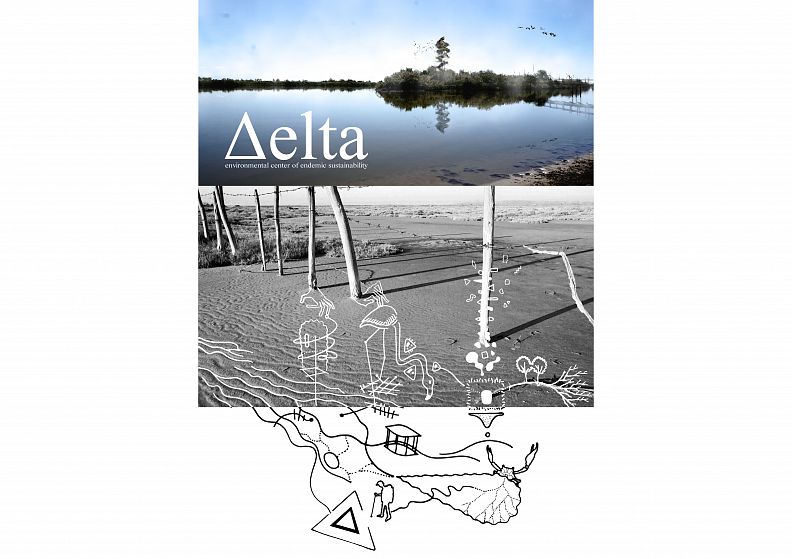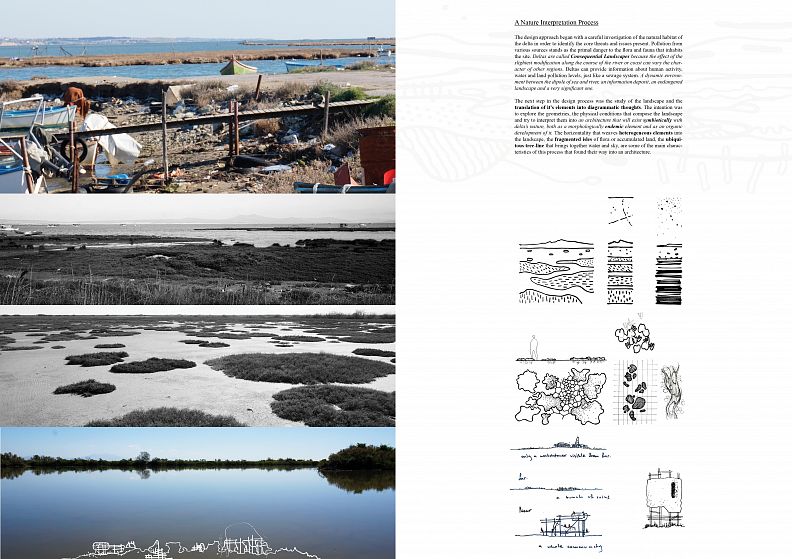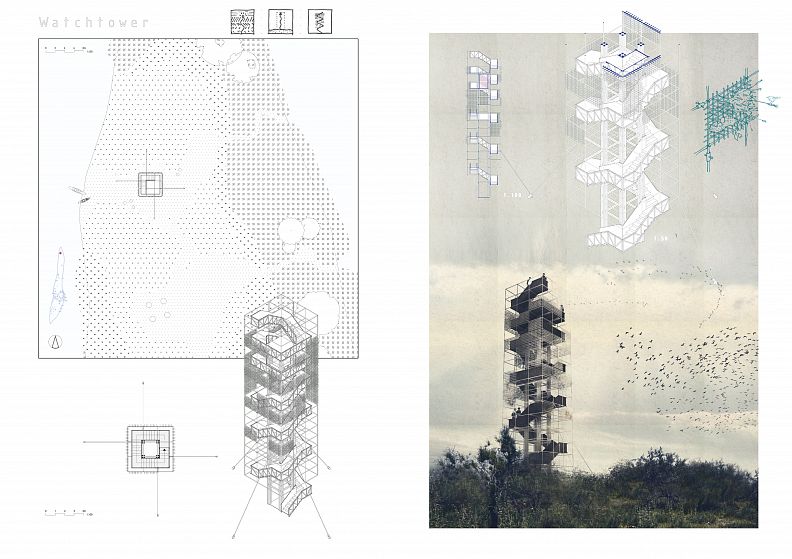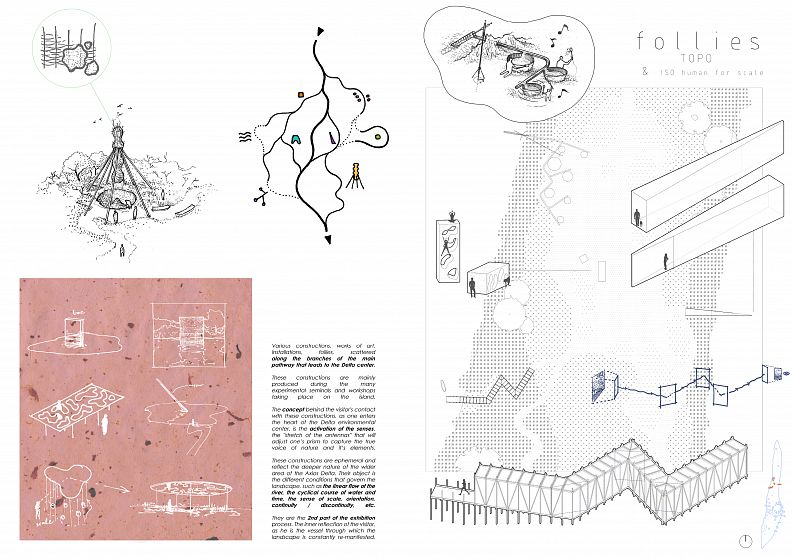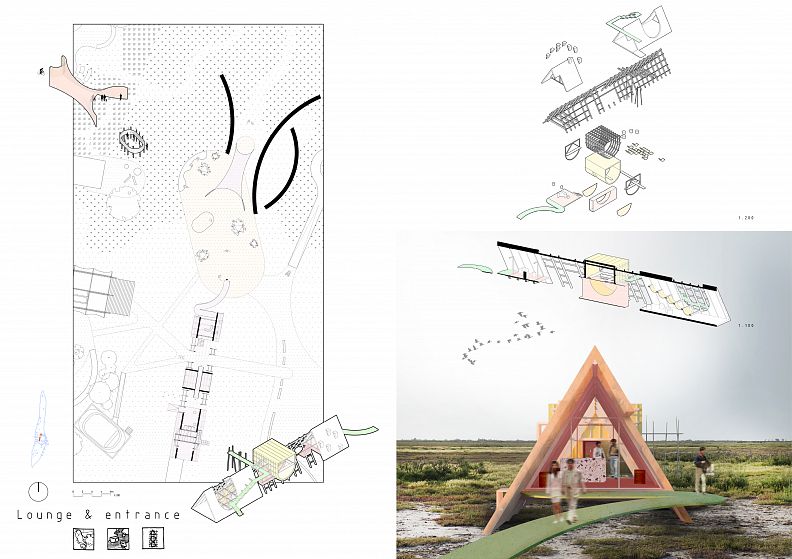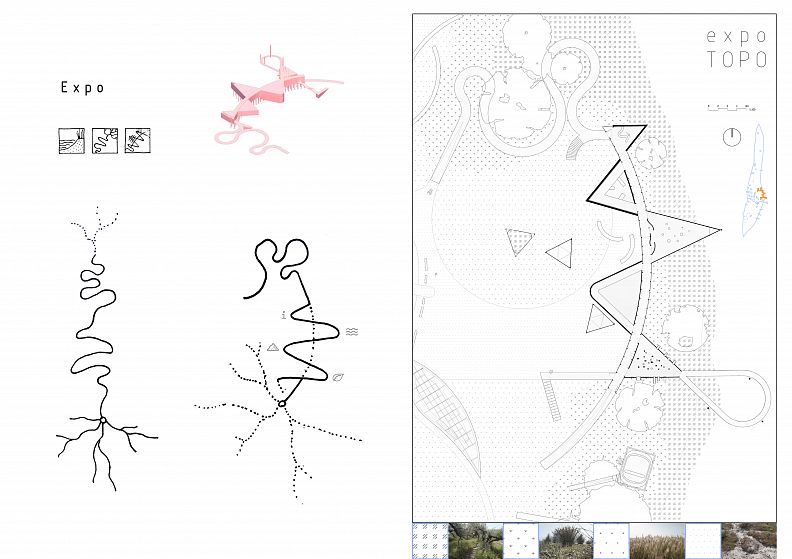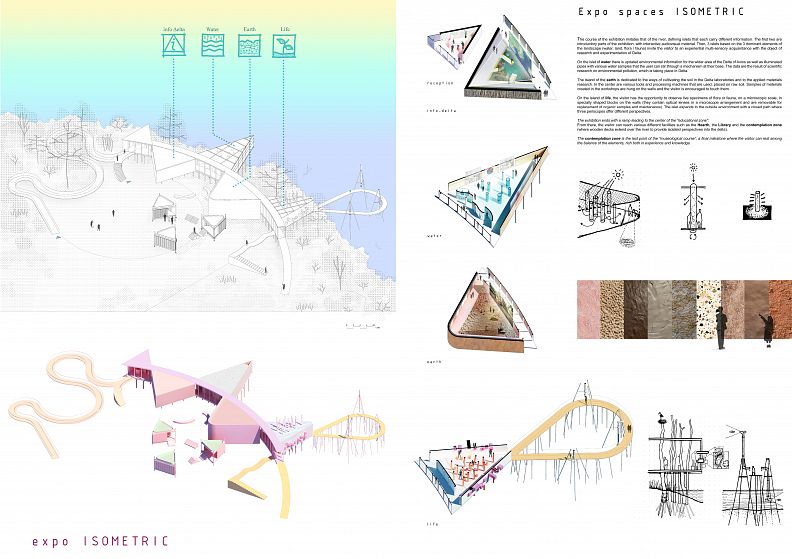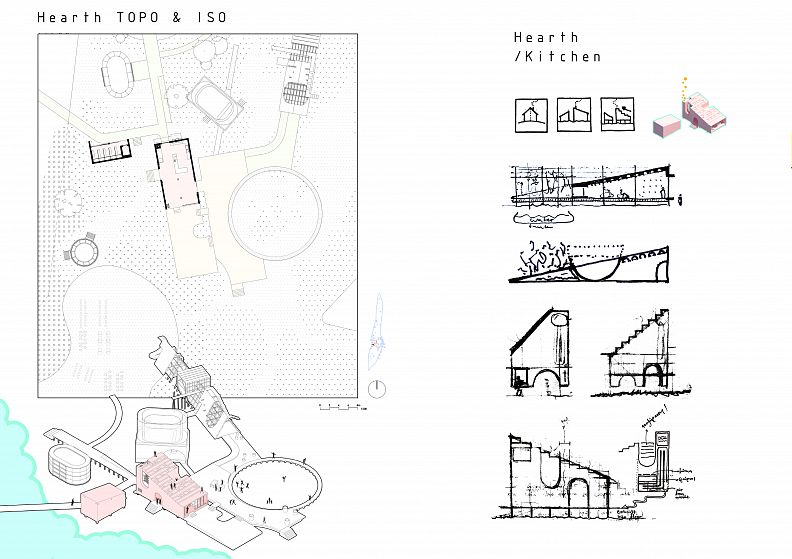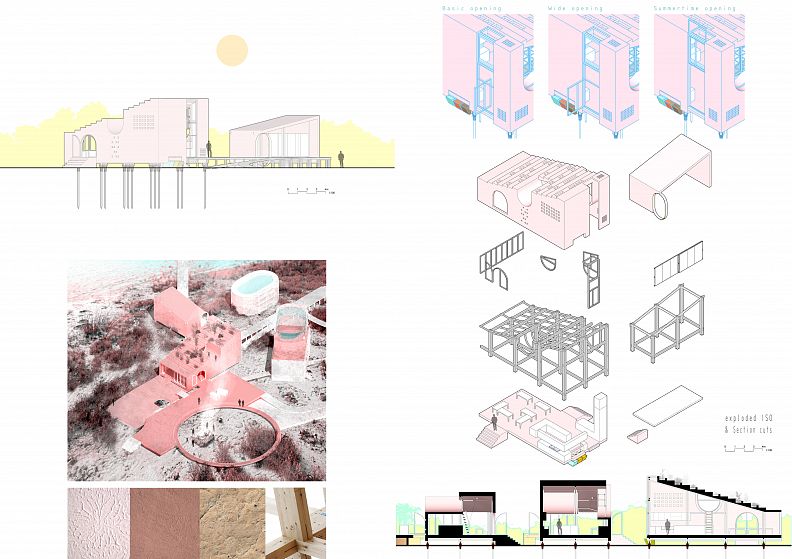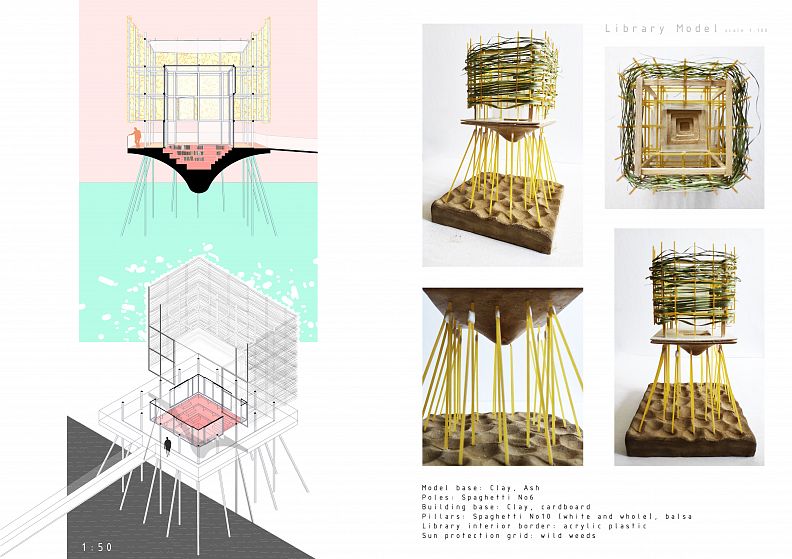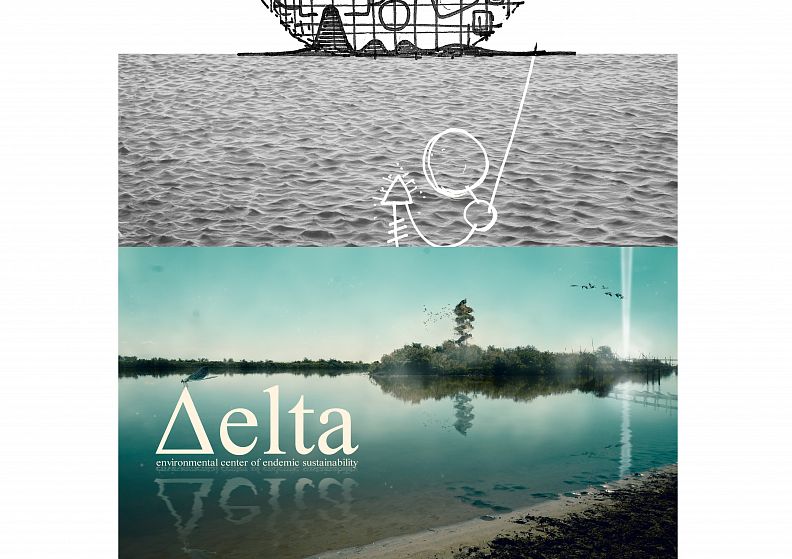Δelta: environmental center of endemic sustainability

Project idea
This project envisions a unique environmental center in the heart of Axios’s River Delta, where the deeper relationship and connection of human and nature constitutes a guide to the interpretation of the landscape, it’s phenomena and the life woven into its multidimensional canvas. Through endemic forms and practices, the Δelta Center composes an experience for the visitor that promotes ecology and sustainability.
Project description
The center acts as an eco-community amidst the biotope, a protection of the Delta from the inside, with constant activity on pollution research, biological preservation and sustainability. A museological course emphasizes Δelta’s educational character and consists of 4 parts, nevertheless, all the facilities double as an example of sustainable design.
Six main facilities are presented here. The Watchtower’s design is based on the escalating layers of vegetation one has to pass through in order to reach the river. The Follies are each dedicated to a human’s sense such as hearing, sight, touch etc. The Lounge’s design derives from the different cultures the river passes through, which are translated into heterogeneous forms on a common grid. The Expo is designed after the shape of the river and the 3 basic elements that compose the delta’s landscape: water (the force that shapes), earth (that which is accumulated, the knowledge -sediments of information) and life (that which grows). The Hearth is the center of the synthesis and is a deconstruction of the home, featuring a rocket mass heater as the power source that burns manure from upriver farms. The Library is designed as an earth mass rising from the water, with vegetation grown around it as a passive solar element and a symbolism of how a core of knowledge can allow for new ideas to grow. The whole composition revolves around the dynamic and interdependent relationship between experience and knowledge.
Technical information
All the buildings were designed using local materials present on site such as clay, straw, sand, timber, fishermen nets, grinded mussel shells and plastic waste. The natural and artificial materials are processed in labs and used as part of the sustainable management of local waste. The basic filling material is raw earth as it can regulate the high humidity, is fully recyclable and plenty on site.
